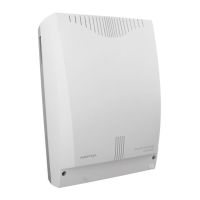Ascotel IntelliGate 2025/2045/2065
Part 3 Planning DECT systems 621
• Avoid making phone calls in unsuitable places, for example in lifts. Users should
be made aware of these zones during instruction.
5.3.3 Using external antennas
The SB-8ANT radio unit with 2 external antenna connections is ideally suited for
use in difficult topographical conditions and for special coverage range require-
ments. External antennas are useful
• for rectifying radio signals, thereby achieving a greater range in one particular
direction (e.g. to provide coverage to remote ancillary buildings).
• for providing coverage to an outside area without the shell of the building
obstructing the propagation of the radio signals (this is achieved by mounting
the radio unit within the building and the antennas outside it).
There are different types of antennas, each with highly specific radio characteris-
tics for meeting individual coverage requirements; they are best illustrated by radi-
ation patterns. The first example shows an antenna that radiates evenly horizon-
tally but has a very restricted range vertically. This type is known as an omni-direc-
tional gain antenna and improves the horizontal range without increasing the
radiation output; it is suitable for open, level premises.
Fig. 3.21: Example 1: Omni-directional gain antenna
The second example of an antenna, which radiates directionally both horizontally
and vertically, is called a corner reflector antenna. It is ideally suited for covering
distant remote buildings or areas.
Horizontal
Radiation pattern in relative field strength
Vertical

